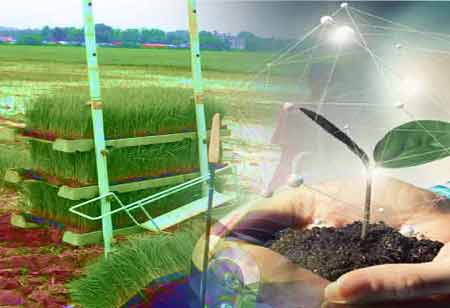Thank you for Subscribing to Agri Business Review Weekly Brief
Sustainable Farming for a Sustainable World
In the modern world, sustainable farming has become increasingly vital.

By
Agri Business Review | Wednesday, November 01, 2023
Stay ahead of the industry with exclusive feature stories on the top companies, expert insights and the latest news delivered straight to your inbox. Subscribe today.
Discuss sustainable farming practices and the recent changes that have shaped the agricultural industry.
FREMONT, CA: In the modern world, sustainable farming has become increasingly vital. With a rapidly growing population and escalating environmental concerns, an agricultural system that balances productivity and ecological stewardship is essential. Sustainable farming practices, which prioritise minimising harmful chemicals, conserving resources and promoting bio-diversity, offer a practical solution to address these challenges. Such methods reduce the environmental footprint of agriculture and ensure long-term food security.
Adopting regenerative agriculture is one of the most important movements in sustainable agriculture. Regenerative farming techniques strongly emphasise improving water management, increasing biodiversity, and restoring the health of the soil. This strategy seeks to strengthen climate change resistance and the environmental impact of agriculture.
Around the world, farmers are using practices like rotational grazing, no-till farming, and cover crops to enhance soil health and reduce erosion. By boosting long-term soil fertility and encouraging greater carbon sequestration, regenerative agriculture aligns with sustainability principles and helps slow down climate change.
In recent years, agroecology has become a crucial element of sustainable farming. To develop resilient and self-sustaining agricultural systems, agroecology blends ecological principles with conventional farming knowledge. It highlights the value of intercropping and using a variety of crop rotations to minimise chemical inputs while maintaining good yields.
Agroecological farming methods prioritise preserving natural resources, reducing waste, and developing local food systems.
More circular economies within agriculture are also required, as with sustainable farming. Reducing waste and reusing resources are the main goals of circular agriculture. This entails utilising agricultural outputs to lessen the environmental impact of farming, minimising food waste through improved harvesting and storage techniques, and recycling crop remains as organic matter. Farms may lessen their carbon footprint and advance resource efficiency by implementing circular methods.
Innovative farming methods are becoming more popular in the quest for sustainability. For example, aquaponics and vertical farming alter how we view agricultural cultivation. These techniques allow for growing vegetables and herbs in layers stacked vertically and fish aquaculture in a closed-loop system, which conserves water and reduces the need for additional space while supplying metropolitan areas with fresh produce. These methods are especially useful in areas with little available water and arable land.
Sustainability throughout the supply chain is gaining importance in addition to on-farm activities. The origins of their food and the sustainability of the entire production process are topics of growing consumer attention. Transparent supply chains that track and validate sustainable practices from farm to table differentiate themselves in the market. This change motivates farmers and food producers to embrace sustainable practices for the environment, market access, and customer confidence, among other factors.
Several nations have established national laws and incentives to support sustainable farming practices to address the growing problems of climate change and environmental degradation. Government initiatives provide farmers with financial incentives, technical support, and research funding to help them adopt sustainable practices. These regulations are important forces behind the shift to more environmentally friendly agriculture.
Innovation, technology, and policy support are all crucial to the future of sustainable farming. Sustainable farming is still a potent answer as the world faces growing food security, climate change, and environmental preservation issues. Positive change in the agricultural environment is anticipated due to the adoption of regenerative agriculture, agroecology, data-driven precision farming, and circular economy methods, as well as growing consumer awareness of and demand for organic and locally sourced food. To achieve a sustainable future for agriculture and ensure that the world can feed itself without jeopardising the requirements of future generations, cooperation between farmers, policymakers, academics, and consumers is essential.





